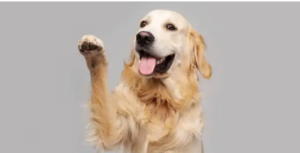Cranial Cruciate Ligament (CCL) tears are one of the most common orthopedic conditions affecting dogs, causing pain, lameness, and joint instability. Surgical intervention is often necessary to restore normal joint function and alleviate discomfort. This article explores various surgical advances and treatments available for treating CCL tear in dogs, focusing on improving outcomes and enhancing quality of life.
Understanding CCL Tears in Dogs
 Through its ability to inhibit an excessive amount of forward movement of the tibia in relation to the femur, the CCL is an essential component in the process of stabilising the knee joint. In this ligament, tears can be caused by a variety of factors, including acute injury, chronic degeneration, or anatomical predispositions. Torn anterior cruciate ligaments (CCL) can result in progressive joint degeneration, osteoarthritis, and irreparable damage to the knee joint if they are not addressed.
Through its ability to inhibit an excessive amount of forward movement of the tibia in relation to the femur, the CCL is an essential component in the process of stabilising the knee joint. In this ligament, tears can be caused by a variety of factors, including acute injury, chronic degeneration, or anatomical predispositions. Torn anterior cruciate ligaments (CCL) can result in progressive joint degeneration, osteoarthritis, and irreparable damage to the knee joint if they are not addressed.
Surgical Treatment Options
Traditional Extracapsular Repair
Extracapsular repair is a commonly performed surgical technique for treating CCL tears in dogs, especially in smaller breeds or less active dogs. During this procedure, a strong suture material is placed outside the joint to stabilise the knee and compensate for the torn ligament. Over time, scar tissue forms around the joint, providing additional support and improving joint stability.
Tibial Plateau Leveling Osteotomy (TPLO)
TPLO is considered a gold standard surgical procedure for treating CCL tear in dogs, particularly in larger, more active dogs. This technique involves cutting the top portion of the tibia and repositioning it to alter the angle of the knee joint. By changing the joint mechanics, TPLO reduces the need for the CCL’s stabilising function, resulting in a more stable and functional knee joint.
Tibial Tuberosity Advancement (TTA)
TTA is another advanced surgical option aimed at stabilising the knee joint without relying on the CCL. In this procedure, the tibial tuberosity (where the patellar tendon attaches) is surgically repositioned and stabilised using a titanium cage or plate. By advancing the tibial tuberosity, TTA alters the forces acting on the joint, thereby reducing instability and promoting faster recovery.
Advanced Arthroscopic Techniques
Arthroscopy allows for minimally invasive visualisation and treatment of joint structures. Advanced arthroscopic techniques, such as intra-articular debridement or partial ligament stabilisation, may be used in select cases to address specific joint issues or refine surgical outcomes. These techniques minimise surgical trauma, reduce recovery time, and optimise post-operative joint function.
Post-Surgical Care and Rehabilitation
Pain Management
Effective pain management is crucial following CCL surgery. Veterinarians may prescribe pain medications and anti-inflammatory drugs to alleviate discomfort and inflammation during the initial recovery period.
Physical Therapy
Physical therapy is essential for optimising recovery and restoring normal joint function following CCL surgery. Rehabilitation exercises, including passive range of motion, controlled exercises, and underwater treadmill therapy, help strengthen muscles, improve joint mobility, and promote healing. Gradual reintroduction of activity minimises complications and supports long-term joint health.
Nutrition and Weight Management
Maintaining a healthy body weight is critical for dogs recovering from CCL surgery. A balanced diet rich in nutrients supports tissue repair, muscle strength, and overall joint health. Weight management reduces stress on the healing joint and minimises the risk of future injuries or joint degeneration.
Long-Term Monitoring and Management
Regular veterinary check-ups and monitoring are necessary to evaluate the dog’s progress and adjust the rehabilitation plan as needed. Long-term management focuses on maintaining joint health, managing osteoarthritis if present, and optimising the dog’s quality of life through appropriate exercise, nutrition, and joint supplements.
Conclusion
Surgical advances in treating CCL tear in dogs offer effective options to restore joint stability, alleviate pain, and improve overall quality of life. Techniques such as TPLO, TTA, and advanced arthroscopy provide tailored solutions that address the unique needs of each dog, promoting optimal surgical outcomes and long-term joint health. By combining advanced surgical interventions with comprehensive post-operative care and rehabilitation, veterinarians can significantly enhance the prognosis and recovery of dogs affected by CCL tears.
In summary, surgical treatment remains a cornerstone in managing CCL tears in dogs, emphasising personalised care and innovative techniques to achieve successful outcomes. Collaboration between pet owners and veterinary professionals ensures a holistic approach to treating CCL tears, supporting dogs in their journey towards restored mobility and enhanced well-being.